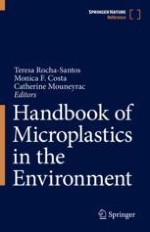2022 | OriginalPaper | Buchkapitel
26. Microplastics
A Pelagic Habitat for Microorganisms and Invertebrates
verfasst von : José Antonio Baptista Neto, Christine Gaylarde, Estefan Monteiro da Fonseca
Erschienen in: Handbook of Microplastics in the Environment
Aktivieren Sie unsere intelligente Suche, um passende Fachinhalte oder Patente zu finden.
Wählen Sie Textabschnitte aus um mit Künstlicher Intelligenz passenden Patente zu finden. powered by
Markieren Sie Textabschnitte, um KI-gestützt weitere passende Inhalte zu finden. powered by
